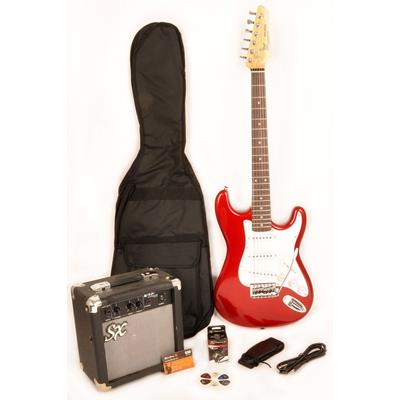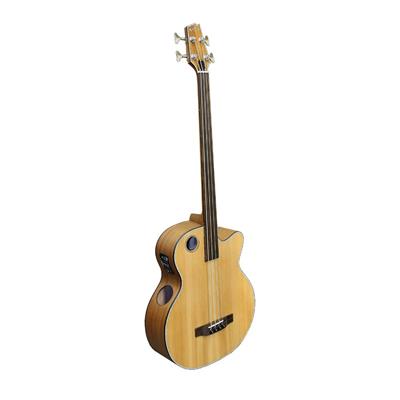Some guitars transcend their role as mere instruments to become cultural icons, artistic statements, and symbols of musical revolution. These legendary six-strings didn’t just make music—they made history. From hand-built masterpieces crafted in suburban garages to vintage treasures that survived nightclub fires, these guitars tell stories that are as captivating as the music they helped create.
Each instrument on this list represents more than wood, wire, and electronics. They embody the dreams, struggles, and genius of the musicians who wielded them, becoming extensions of their creators’ souls and windows into musical evolution itself.
1. Brian May’s “Red Special” – The Fireplace Phoenix
The Most Ingenious DIY Guitar Ever Built
In the early 1960s, a teenager named Brian May and his father Harold embarked on what might be history’s most famous father-son project. Armed with little more than determination, creativity, and wood salvaged from an 18th-century fireplace, they created what would become one of rock’s most distinctive guitars.
The Incredible Construction Story
The Red Special’s body was carved from centuries-old oak, giving it a resonance that no modern guitar could replicate. But the ingenuity didn’t stop there:
Motorcycle valve springs served as tremolo springs
A knitting needle became the tremolo arm (though this was later upgraded)
Mother-of-pearl buttons from Brian’s mother’s button box became position markers
Hand-wound pickups were built from scratch using materials that cost less than £20

What Makes It Special
The Red Special features three Burns Tri-Sonic pickups and a complex switching system that allows for 24 different pickup combinations—far more than any standard guitar. Each pickup can be switched in or out of phase, creating the ethereal, orchestral tones that define Queen’s sound.
Musical Legacy
This homemade marvel has been heard on every Queen album and in every major stadium worldwide. From the opening chords of “We Will Rock You” to the soaring solo in “Bohemian Rhapsody,” the Red Special’s voice is woven into the fabric of rock history. May has remained faithful to his creation for over 60 years, proving that sometimes the best instruments come from the heart, not the factory.
2. Jimi Hendrix’s Monterey Stratocaster – Art in Destruction

The Guitar That Died for Rock and Roll
On June 18, 1967, at the Monterey Pop Festival, Jimi Hendrix transformed a simple Fender Stratocaster into perhaps the most famous sacrificial offering in rock history.
This psychedelic-painted instrument would live for only one performance, but its death would echo through eternity.
The Performance That Changed Everything
Hendrix had actually played a black Stratocaster for most of his Monterey set. The flower-painted white Strat was reserved specifically for the finale—a theatrical gesture that would cement his reputation as rock’s ultimate showman. After a searing rendition of “Wild Thing,” Hendrix doused the guitar in lighter fluid and set it ablaze, creating one of rock’s most iconic images.
The Artistic Statement
The guitar’s psychedelic paint job, applied with nail polish in swirling patterns of flowers and colors, perfectly captured the spirit of 1967’s Summer of Love. But its destruction represented something deeper—the transformation of music from entertainment to art, from performance to statement.
Cultural Impact
The burned remains of the Monterey Strat are preserved as a museum piece, but its influence lives on. The image of Hendrix kneeling before his flaming guitar has been reproduced countless times, becoming a symbol of artistic sacrifice and rock rebellion. It proved that sometimes destroying something beautiful creates something even more powerful—a memory, a moment, a myth.
3. Eddie Van Halen’s “Frankenstrat” – Innovation Through Necessity
The Guitar That Redefined Rock
When Eddie Van Halen couldn’t afford the perfect guitar, he built it himself. What emerged was “Frankenstein”—
A patchwork of parts that would revolutionize rock guitar and spawn an entire industry of “superstrats.”
Photo Credit: Heinrich Klaffs

The Mad Scientist’s Creation
Eddie’s approach was part practicality, part genius:
- Body: A Boogie Bodies Stratocaster blank (designed by Wayne Charvel)
- Neck: A Fender maple neck from an earlier guitar
- Pickup: A Gibson PAF humbucker, routed into the Strat body with a chainsaw
- Paint: Red with black and white stripes, applied with masking tape
- Hardware: Floyd Rose tremolo system for dive-bomb effects
The Sound Revolution
The single humbucker in the bridge position, combined with Eddie’s innovative playing techniques, created a sound that was both powerful and articulate. The guitar could handle extreme tremolo effects while maintaining tuning stability—something that had never been achieved before.
Industry Impact
The “Frankenstrat” concept—combining Stratocaster versatility with humbucker power—became the template for countless guitars. Companies like Jackson, Kramer, and others built entire product lines around this hybrid design. Today, the “superstrat” configuration is so common that it’s hard to imagine rock without it.
4. B.B. King’s “Lucille” – A Name Born from Fire

The Guitar That Carried the Blues
The story of “Lucille” begins with a fight, a fire, and a desperate rescue mission that nearly cost B.B. King his life.
What emerged was not just a guitar, but a symbol of dedication, love, and the blues itself.
Photo Credit: Heinrich Klaffs
The Origin Story
In 1949, at a dance hall in Twist, Arkansas, a fight broke out between two men over a woman named Lucille. In the chaos, the building caught fire. As everyone fled, B.B. realized he’d left his guitar inside. Against all reason, he ran back into the burning building to save his $30 acoustic guitar.
In 1970, Clapton visited Sho-Bud guitars in Nashville and bought six vintage Stratocasters for $100 each. He gave three away to friends—George Harrison, Pete Townshend, and Steve Winwood—and used the best parts from the remaining three to create “Blackie.”
When he learned the fight was over a woman named Lucille, King decided to name his guitar after her—to remind himself never to do anything so dangerous again.
Evolution of an Icon
King would go on to name every guitar he owned “Lucille,” but the most famous was his Gibson ES-355. This semi-hollow body guitar, with its rich, warm tone, became the voice of modern blues. King’s vibrato and emotional phrasing transformed the instrument into an extension of his soul.
The Eternal Bond
For over 60 years, King and his various Lucilles were inseparable. He treated his guitars with the respect reserved for family members, often introducing them to audiences and apologizing when they went out of tune. “Lucille” became more than a guitar—she was King’s partner, confidante, and voice.
5. Eric Clapton’s “Blackie” – The $1 Million Composite
The Most Expensive Guitar in Auction History
Eric Clapton’s “Blackie” tells a story of friendship, craftsmanship, and ultimately, healing. This composite Stratocaster, built from three vintage guitars, would eventually sell for nearly $1 million to support Clapton’s battle against addiction.
Photographer Credit: F. Antolín Hernandez

The Birth of Blackie
The 15-Year Partnership
From 1970 to 1985, Blackie was Clapton’s primary instrument. It appeared on classics like “Layla,” “Wonderful Tonight,” and “Cocaine.” The guitar’s voice became synonymous with Clapton’s emotional playing style and his journey through love, loss, and redemption.
A Noble End
In 2004, Clapton auctioned Blackie for $959,500 to benefit his Crossroads Centre, a drug and alcohol rehabilitation facility in Antigua. The sale wasn’t just about money—it was about transformation, turning a symbol of his playing into a tool for healing others.
6. Jimmy Page’s “Number One” Les Paul – The Stairway to Heaven

The Guitar That Defined Hard Rock
When Jimmy Page acquired his 1959 Gibson Les Paul Standard from Joe Walsh in 1969, he gained more than just an instrument—
He found the voice that would define Led Zeppelin’s sound and hard rock itself.
The Perfect Match
Page’s “Number One” was already special when he acquired it. The previous owner had shaved the neck to a thinner profile, making it faster and more comfortable to play. Page made his own modifications:
- Push-pull phase switch for unique tonal combinations
- Removed pickup cover on the bridge humbucker for a brighter sound
- Custom electronics for maximum versatility
Legendary Recordings
This guitar was the primary instrument on Led Zeppelin’s most famous tracks:
- The opening to “Black Dog”
- The crushing riff of “Whole Lotta Love”
- The epic journey of “Stairway to Heaven”
- The Eastern mysticism of “Kashmir”
The Sound of an Era
Page’s Number One didn’t just play notes—it created landscapes. Through his innovative use of violin bows, alternate tunings, and effects, he transformed the Les Paul into an orchestra. The guitar’s fat, sustaining tone became the template for countless rock guitarists who followed.
7. Prince’s “Cloud” Guitar – Purple Rain Incarnate
The Most Sensually Shaped Guitar Ever Made
Prince’s “Cloud” guitar was as unique and provocative as the artist himself. This curvaceous custom instrument became a visual icon of the 1980s and a symbol of Prince’s artistic vision.

The Minneapolis Genesis
The Cloud was designed by local Minneapolis luthier Dave Rusan, specifically for the “Purple Rain” movie. Its voluptuous curves and distinctive shape were unlike anything seen before—simultaneously futuristic and organic, powerful and sensual.
Design Innovation
The Cloud featured:
- Extended lower horn for improved upper fret access
- Elaborate headstock with crown-like design
- EMG pickups for clarity and power
- Floyd Rose tremolo for dramatic effects
Cultural Impact
The Cloud guitar became as much a part of Prince’s identity as his music. Its appearance in the “Purple Rain” film cemented its place in pop culture history. The guitar’s shape has been endlessly copied and referenced, becoming a symbol of 1980s excess and creativity.
8. Willie Nelson’s “Trigger” – The Guitar That Won’t Die

The Most Battle-Scarred Survivor in Country Music
Willie Nelson’s Martin N-20 classical guitar, nicknamed “Trigger,” might be the most played guitar in history. After 50+ years of constant use, it looks like it should have died decades ago, but it continues to sing with Nelson’s distinctive voice.
Credit: Robbiework
The Unusual Choice
In 1969, a drunk fan stepped on Willie’s guitar at a Texas honky-tonk. The replacement was a Martin N-20 nylon-string classical guitar—an unusual choice for a country singer. But Willie fell in love with its warm, intimate tone.
Battle Scars and Stories
Trigger bears the wounds of five decades on the road:
- A massive hole worn through the body from Willie’s picking
- Countless dings and scratches from travel and performance
- Autographs from fans and friends covering the body
- A completely worn-through top that somehow still resonates
The Inseparable Bond
Nelson has said repeatedly, “When Trigger goes, I’ll quit.” The guitar has become so much a part of his identity that it’s impossible to imagine one without the other. It’s a testament to the power of loyalty and the beauty that comes from use, wear, and love.
9. David Gilmour’s Black Strat – The Voice of Pink Floyd
The Guitar That Painted Sonic Landscapes
David Gilmour’s 1969 Black Stratocaster is arguably the most recorded and recognized Strat in rock history. Its voice echoes through Pink Floyd’s greatest achievements and continues to inspire guitarists worldwide.
Credit: Lrheath

The Evolution of a Legend
Gilmour acquired the Black Strat in 1970, and it has undergone constant evolution:
- Pickup changes to find the perfect voice
- Electronic modifications for unique switching options
- Hardware upgrades including custom tremolo arms
- Careful maintenance to preserve its magic
Sonic Masterpieces
The Black Strat’s voice defines Pink Floyd’s sound:
- The crying bends in “Comfortably Numb”
- The soaring melody of “Shine On You Crazy Diamond”
- The ethereal tones throughout “The Dark Side of the Moon”
- The emotional journey of “Wish You Were Here”
A $3.9 Million Legacy
In 2019, Gilmour auctioned the Black Strat for $3.975 million, making it the most expensive guitar ever sold. The proceeds went to climate change charities, ensuring that even in retirement, the guitar continues to make a difference.
10. Stevie Ray Vaughan’s “Number One” – The Texas Flood

The Most Soulful Stratocaster Ever Played
Stevie Ray Vaughan’s “Number One,” also known as his “First Wife,” was a battered 1963 Stratocaster that became the voice of modern blues guitar.
Credit: Bbadventure
The Pawn Shop Discovery
SRV discovered Number One in a Texas pawn shop, where its previous owner had left it after being unable to make payments. The guitar was already well-worn when Vaughan found it, but he saw its potential.
Distinctive Characteristics
Number One featured:
- 1963 body with heavy wear and character
- 1962 neck with a comfortable, thick profile
- Custom electronics wired to Vaughan’s specifications
- “SRV” stickers on the pickguard
- Left-handed tremolo for easier string bending
The Sound of Texas Blues
Through Number One, Vaughan channeled the history of Texas blues, from T-Bone Walker to Albert King. His aggressive attack and emotional depth transformed the instrument into a conduit for pure feeling. Songs like “Pride and Joy” and “Texas Flood” showcase the guitar’s incredible voice.
The Science of Guitar Fame
What transforms an ordinary instrument into a legend? Analysis of these famous guitars reveals several common factors:
1. The Human Connection
Every famous guitar has a deep, personal relationship with its player. These aren’t just tools—they’re partners, collaborators, and sometimes obsessions.
2. Unique Characteristics
Whether through modification, age, or construction, each guitar possesses something that sets it apart from every other instrument.
3. Historical Moments
Great guitars are present for great moments. They’re there when lightning strikes, when magic happens, when history is made.
4. Sonic Innovation
These guitars didn’t just play music—they created new sounds, opened new possibilities, and inspired new generations of musicians.
5. Cultural Impact
The most famous guitars transcend music to become cultural symbols, representing eras, movements, and ideals.
The Modern Era: Digital Age Legends
While most legendary guitars come from earlier eras, the digital age has produced its own icons:
Tom Morello’s “Arm the Homeless”
Morello’s heavily modified Stratocaster demonstrates that innovation didn’t stop in the 1970s. Through creative use of effects and unconventional techniques, he’s created entirely new sounds from familiar instruments.
The Edge’s Effects-Laden Strats
U2’s guitarist has shown that in the modern era, the effects chain is as important as the guitar itself. His instruments are platforms for sonic exploration rather than traditional tone sources.
St. Vincent’s Signature Ernie Ball
Annie Clark’s custom-designed guitar represents the future—ergonomic, innovative, and designed specifically for female performers.
The Economics of Guitar Fame
The auction prices of these legendary instruments reveal their cultural value:
- David Gilmour’s Black Strat: $3.975 million (2019)
- Eric Clapton’s Blackie: $959,500 (2004)
- John Lennon’s Rickenbacker: $2.4 million (2015)
- Bob Dylan’s Newport Electric: $965,000 (2013)
These prices reflect more than mere market value—they represent the worth of musical history, the price of owning a piece of cultural heritage.
Lessons from the Legends
What can modern musicians learn from these famous guitars?
1. Modification is Not Sacrilege
Most legendary guitars were heavily modified by their owners. Don’t be afraid to customize your instrument to suit your needs.
2. Relationship Over Specs
The technical specifications matter less than the emotional connection. Find an instrument you love and stick with it.
3. Use Creates Character
The most famous guitars show their age and use. Don’t baby your instrument—play it, tour with it, let it live.
4. Innovation Beats Imitation
The legendary guitars were innovative for their time. Don’t just copy what came before—create something new.
5. Story Matters
Every great guitar has a great story. The narrative is as important as the sound.
The Future of Guitar Fame
As music continues to evolve, new legendary instruments will emerge. They might be:
- Digital instruments that blur the line between traditional and electronic
- Sustainable guitars made from recycled or eco-friendly materials
- Adaptive instruments designed for different abilities and playing styles
- AI-enhanced guitars that learn and respond to their players
Conclusion: More Than Wood and Wire
These legendary guitars teach us that greatness isn’t about perfection—it’s about connection, innovation, and the courage to create something new. Each instrument on this list started as raw materials: wood, wire, metal, and electronics. But in the hands of visionary musicians, they became something transcendent.
They remind us that the most important element in any musical equation isn’t the gear—it’s the human spirit that brings it to life. These guitars became famous not because they were perfect, but because they were perfectly matched to the artists who played them.
Whether built in a suburban garage, rescued from a fire, or assembled from spare parts, these instruments share one common trait: they were loved. They were played with passion, modified with purpose, and treated as partners in the creative process.
In the end, that’s what makes a guitar truly legendary—not its price tag or pedigree, but its ability to inspire, to create, and to touch the human soul. These guitars didn’t just make music; they made magic. And in doing so, they earned their place in the pantheon of cultural treasures that will inspire musicians for generations to come.
The next legendary guitar is out there somewhere—in a music store, a pawn shop, or maybe even a pile of spare parts in someone’s garage. It’s waiting for the right hands, the right heart, and the right moment to transform from mere instrument to immortal icon.
What guitar would you sacrifice everything for? What instrument speaks to your soul? The next legend might just be waiting in your hands.
Drop us a line, we would love to hear from you !






